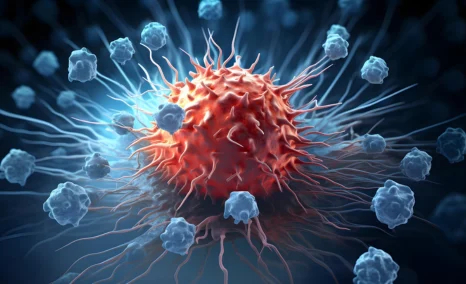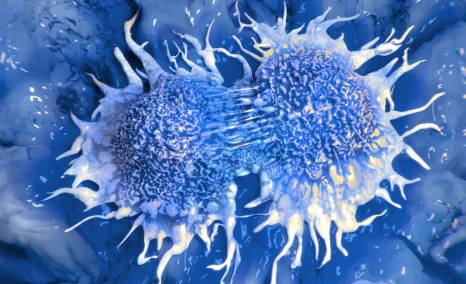Progeria: The Rarest Case of Premature Ageing
Jul 16, 2025
Table of Contents
Progeria, also known as Hutchinson-Gilford Progeria Syndrome (HGPS) and Benjamin button disease, is one of the rarest and most dramatic genetic disorders known to medicine. Characterized by rapid and premature ageing in children, this condition affects approximately 1 in 20 million people worldwide. Children with progeria typically appear normal at birth but begin to show signs of accelerated aging within the first two years of life. Despite their young age, these children often exhibit physical traits typically associated with the elderly, including hair loss, wrinkled skin, joint stiffness, and cardiovascular disease.
Understanding Progeria
The historical background of progeria dates back to 1886 when British physician Dr. Jonathan Hutchinson first described a patient with symptoms resembling premature aging. Later, in 1904, Dr. Hastings Gilford documented a similar case, leading to the condition being named HGPS (Hutchinson-Gilford progeria syndrome) in their honor. For decades, the disorder remained a medical mystery due to its extreme rarity and unclear genetic origins. It wasn’t until 2003 that researchers identified a mutation in the LMNA gene as the progeria causes. This discovery not only advanced the understanding of the disease’s molecular basis but also opened new pathways for research into aging and progeria similar diseases.
Downloads
Click Here To Get the Article in PDF
Recent Articles
Interesting Facts About Progeria
- There are only about 100–150 known cases globally at any given time.
- Children with Progeria age around 7–10 times faster than normal. This means that by the time they are 10 years old, their bodies may resemble that of a 70-year-old.
- Unlike many genetic diseases, Progeria is not usually inherited. It is caused by a random new mutation, making it even more unpredictable.
- Most children with Progeria or Benjamin button disease die from complications related to atherosclerosis, such as heart attacks or strokes, typically between the ages of 8 and 21.
- Despite their physical challenges, children with Progeria usually have normal intellectual development and are often described as bright, engaging, and mature for their age.
What are the Different Types of Progeria?
Progeria or Benjamin button sickness is a group of rare genetic disorders characterized by dramatic, rapid aging in children. While the most well-known form is HGPS (Hutchinson-Gilford Progeria Syndrome), there are several types of progeria disorder, each with distinct genetic causes and symptoms. The main types of progeria include:
HGPS Disease: This is the most common and well-studied form of progeria. HGPS syndrome is caused by a mutation in the LMNA gene, which leads to the production of an abnormal protein called progerin. This defective protein weakens the structural integrity of the cell nucleus, resulting in premature aging. Children with HGPS disease typically appear normal at birth but begin showing signs of aging within the first two years of life, such as growth failure, hair loss, aged-looking skin, and joint stiffness. They often suffer from severe cardiovascular disease and have an average HPGS life expectancy of 13 to 15 years.
Werner Syndrome: Also known as “adult progeria,” Werner syndrome typically manifests in adolescence or early adulthood. It is caused by mutations in the WRN gene, which plays a role in DNA repair and maintenance. Individuals with this condition experience premature aging progeria symptoms such as graying hair, cataracts, skin atrophy, diabetes, and osteoporosis. Werner syndrome is associated with an increased risk of cancer and cardiovascular disease, and progeria disease life expectancy is usually shortened, often to the mid-40s or 50s.
Cockayne Syndrome: Though not always classified strictly under progeria, Cockayne syndrome shares overlapping features such as growth delays, premature aging, and neurodevelopmental issues. It is caused by mutations in genes involved in DNA repair (most commonly ERCC6 or ERCC8). Progeria symptoms include photosensitivity, hearing loss, vision problems, and neurological decline. Unlike HGPS, CS does not typically involve cardiovascular disease but does lead to shortened progeria syndrome life expectancy, usually into childhood or early adulthood.
Rothmund-Thomson Syndrome: This rare progeria genetic disorder genetic disorder is associated with mutations in the RECQL4 gene. Symptoms of progeria typically begin in infancy and include skin abnormalities (such as a rash), sparse hair, skeletal defects, and a predisposition to cancer (especially osteosarcoma). Although not a classic progeria, it is part of the progeroid spectrum due to features of premature aging.
Mandibuloacral Dysplasia: This is a rare form of progeria syndrome involving mutations in the LMNA or ZMPSTE24 genes. It is characterized by skeletal abnormalities, skin thinning, lipodystrophy (loss of body fat), and delayed growth. People with MAD may have a longer progeria syndrome life expectancy than those with HGPS, but still experience features of early aging.
In summary, while Hutchinson-Gilford Progeria Syndrome is the most recognized form, there are several types of progeria with varying genetic causes, symptoms, and progression. Each condition provides unique insights into the biology of aging and genetic stability.

Progeria Genetic Roots and Mechanism
Progeria is caused by a mutation in the LMNA gene, which encodes the lamin A protein, a crucial component of the nuclear envelope that surrounds the cell’s DNA. The mutation leads to the production of an abnormal form of the protein called progerin, which destabilizes the cell nucleus and impairs normal cell function. Unlike inherited genetic disorders, Progeria disease typically arises from a de novo mutation, meaning it is not passed down from parents but occurs spontaneously during cell division.
Progeria Symptoms and Diagnosis
Children with Progeria appear normal at birth, but signs of rapid ageing begin to manifest within the first year of life. The symptoms of progeria genetic disease include growth delays, hair loss, aged-looking skin, joint stiffness, and prominent facial features such as a small jaw and pinched nose. Internally, they experience conditions typically associated with old age, such as atherosclerosis, bone fragility, and cardiovascular disease. Despite their aged appearance and medical progeria complications, affected children maintain typical intelligence and emotional development.
Progeria diagnosis is usually made based on clinical signs, supported by genetic testing to confirm the LMNA mutation. Advances in molecular diagnostics have allowed for earlier and more accurate identification of the progeria genetic disease.
Current Status of Progeria Treatment
Although there is currently no progeria cure, significant progress has been made in developing treatments that can help manage symptoms, improve quality of life, and extend lifespan. ZOKINVY is the first and only progeria treatment approved by the FDA to address both the underlying cause and symptoms of progeria, specifically Hutchinson-Gilford progeria syndrome and processing-deficient progeroid laminopathies (PDPL), in patients aged 12 months and older. Clinical studies have shown that lonafarnib can significantly improve cardiovascular health and increase lifespan in children with progeria.
These conditions, collectively referred to as progeria, are extremely rare and fatal genetic disorders that cause accelerated aging and significantly shorten life expectancy in children. After its initial US approval in 2020, ZOKINVY later received authorization in the European Union and Great Britain (2022) and in Japan (January 2024) for treatment for progeria.
In May 2024, Sentynl Therapeutics, Inc., a U.S.-based biopharmaceutical company fully owned by Zydus Lifesciences, Ltd., along with Eiger BioPharmaceuticals, Inc., a commercial-stage biopharmaceutical firm specializing in innovative therapies for rare metabolic disorders, announced the completion of the sale of Eiger’s ZOKINVY (lonafarnib) program to Sentynl.
New Treatments for Progeria on the Horizon
In addition to ZOKINVY, other progeria treatments are being explored, including gene therapy, antisense oligonucleotides, and CRISPR-Cas9 gene editing approaches. These aim to correct or suppress the faulty LMNA gene that causes the disease. Supportive treatments for progeria, such as physical therapy, cardiovascular care, and nutritional support, are also crucial in managing complications like joint stiffness, atherosclerosis, and growth delays.
At present, PRG Science & Technology (Progerinin) is involved in developing therapies for progeria treatment. Ongoing research and clinical trials continue to explore combination therapies and more precise genetic interventions. While challenges remain, the scientific community is hopeful that emerging treatments for progeria will further improve outcomes for individuals living with progeria.
Conclusion
Progeria is a rare but profound condition that underscores the complexity of human aging and the power of genetic mutations. Though children with Progeria face immense challenges, advancements in research and treatment offer a glimmer of hope. In many ways, these children have become ambassadors for science—reminding the world that even the rarest disorders can teach us something vital about life, resilience, and the human condition.

Frequently Asked Questions
Progeria syndrome is a rare genetic disorder that causes children to age rapidly, leading to symptoms resembling accelerated aging. It is caused by a mutation in the LMNA gene affecting cell structure and stability.
Progeria is an extremely rare genetic disorder, with a progeria prevalence of about 1 in 4 to 8 million newborns worldwide. Only around 100–150 cases are reported globally at any given time.
Progeria is caused by a rare genetic mutation in the LMNA gene and is not inherited in most cases. There are no specific environmental or lifestyle progeria risk factors associated with the condition.
Progeria is caused by a mutation in the LMNA gene, which produces an abnormal protein called progerin. This protein weakens the structure of cells, leading to rapid aging.
Currently, there is no cure for HPGS; treatment focuses on supportive care and drugs like lonafarnib, a farnesyltransferase inhibitor, to improve symptoms and extend lifespan. Research on gene therapy and combination HPGS treatments is ongoing.
Downloads
Article in PDF



